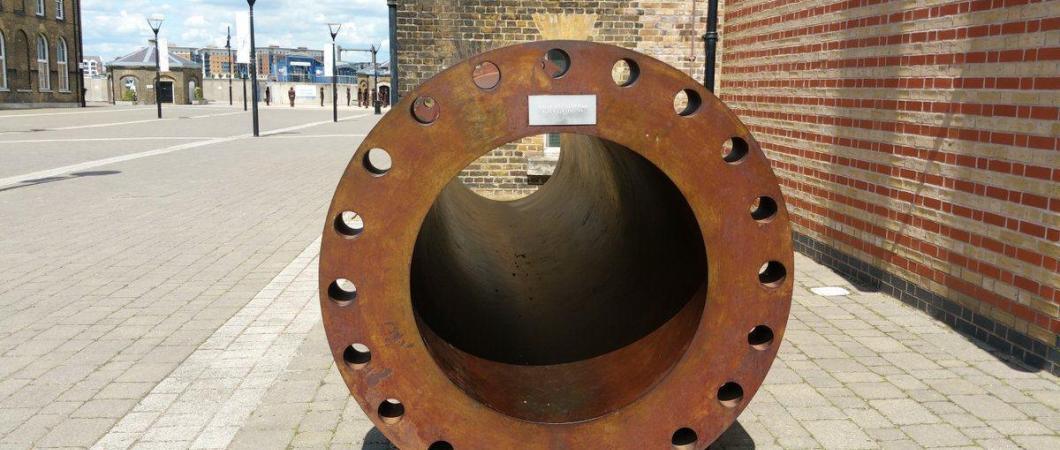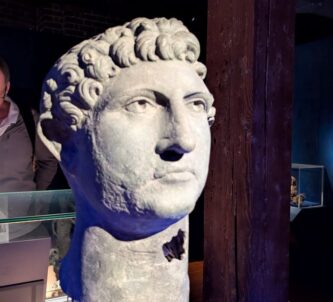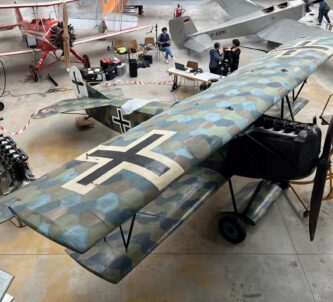This was one of the 26 sections destined to be part of Saddam Hussein’s ‘Project Babylon’ Iraqi supergun project started in the late 80s.
The project was the brainchild of Dr Gerald Bull, a Canadian artillery expert who had been involved in the US-Canadian HARP project (High Altitude Research Project) in the sixties. The object was to launch satellites into low earth orbit using a gun, making it far cheaper than a normal rocket launch. The HARP project managed to shoot rocket assisted loads to 180 km altitude. You can still see the remains of the HARP project guns on Barbados.
When HARP was closed down in the late 60s, Gerald Bull went on to develop very successful traditional artillery for South Africa, and so caught the eye of Saddam Hussein. It seems Bull persuaded President Hussein to support a new supergun project (Project Babylon) for launching satellites, but which could also be used for military purposes.
A 350mm x 46m prototype gun, called ‘Baby Babylon’, was built first. Then work began on the 1,000mm x 156m ‘Big Babylon’, which was a fixed gun to be used for satellites. A further two 350 mm guns which would have the same 700 mile range as the prototype were planned for phase two. These could traverse and elevate and thus be aimed, which no doubt alarmed Iraq’s neighbours.
It all came to an end in 1990 after Iraq invaded Kuwait. In March, Dr Bull was shot six times in the back of the head as he arrived outside the door of his flat in Brussels – put it this way, the coroner’s report didn’t say ‘accidental death’! Then, in April UK customs intercepted the last 8 sections of ‘Big Babylon’ on their way to Iraq. Finally, in 1991 ‘Baby Babylon’ was revealed to UN Inspectors on a hillside in Iraq.
Two of the ‘Big Babylon’ sections can be seen at Royal Armories museum at Fort Nelson. One is in the American Air Museum at IWM Duxford (at least it was)… and this one used to be sat outside the Royal Artillery ‘Firepower’ museum in Woolwich (where I photographed it) until the museum closed in 2016.
The good news is, the Royal Artillery collection is now temporarily housed at their regimental base at Larkhill in Wiltshire, where it is planned to be put back on display in a major new museum (Can’t wait!).








Just checking, but that’s the only photo I took of that section and it doesn’t really show the thickness. However, Royal Armouries have a couple of useful images of the sections in their care at Fort Nelson.
This one indicates the thickness: https://collections.royalarmouries.org/object/rac-object-13168.html
And this one gives a side view: https://collections.royalarmouries.org/object/rac-object-13158.html
Looking at the photo of the section of the Iraqi supergun reminded me of my time working in the American pietro-chemical industry, where I was involved in manufacturing oil and gas pipeline equipment.
Much of the equipment was coincidentally produced for the iraqi oilfields and remarkably resembled pieces like that in the photo. It makes me wonder was I was helping to produce.
Yeah, I guess a section of pipe is a section of pipe, but how thick were your pipes, David? (If that’s not too personal a question to ask!) I’m assuming an oil or gas pipe carrying those at pressure doesn’t have to be quite as thick as a gun barrel designed to contain a massive shell & explosive accelerant…? Serious question. I have no expertise.